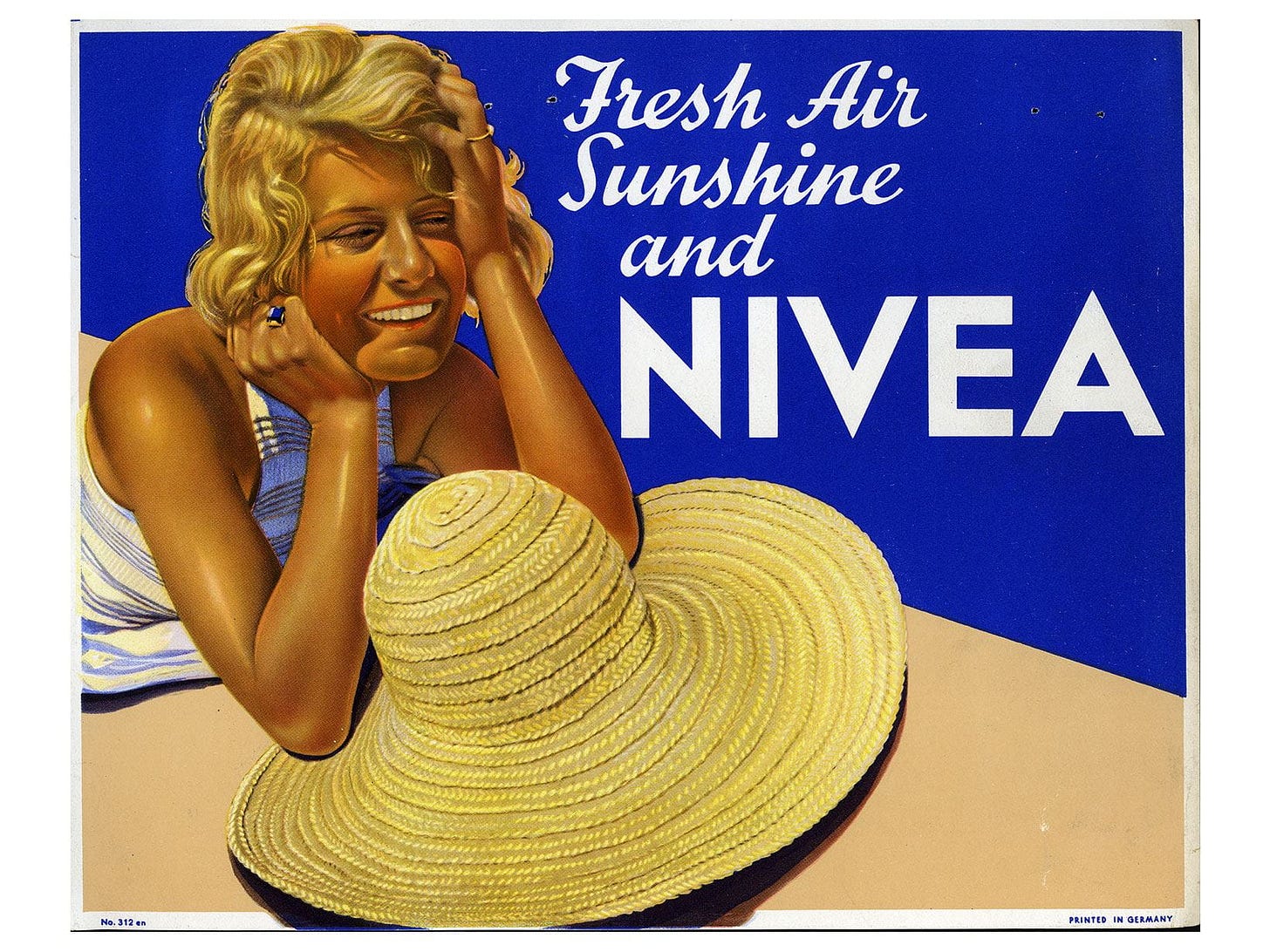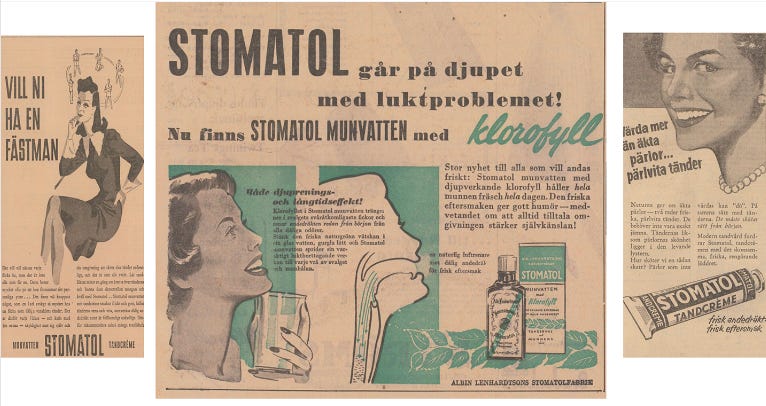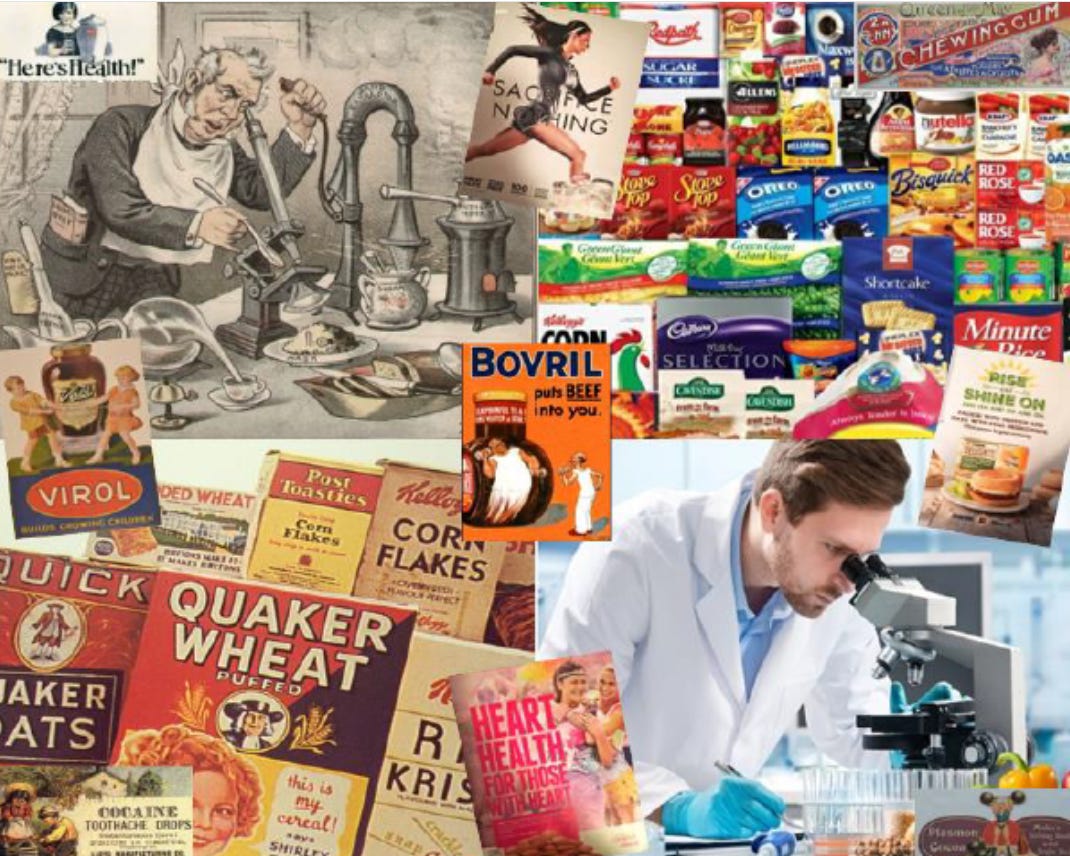
What initially drew you to join the Cosmetic History and Makeup Studies Network?
For the past six years, I’ve been researching food marketing in nineteenth and early-twentieth century Sweden and Britain. One of my studies (with Göran Eriksson) was on radium products and I used Lucy’s book Half Lives as a key resource for my background research. After my paper was published, I reached out to Lucy to share it and tell her how helpful her book had been. We kept in touch, so as soon as I heard news from her that she was setting up a Cosmetic History and Makeup Studies Network, I knew that I wanted to be involved. My more recent work has expanded into cosmetics marketing, particularly the use of scientific/medical claims, so I thought the network would be a great place to meet with likeminded people and share ideas.
Can you share a bit about your background and what sparked your interest in cosmetic history and makeup studies?
I’m a historical sociolinguist who specialises in nineteenth and early-twentieth century material culture, using an approach that blends archival research with multimodal critical discourse analysis. My doctoral and postdoctoral research was actually in the area of Edwardian book inscriptions and how individuals performed (class) identities through their inscriptions. I stumbled into food and, then later, cosmetic history by chance after being invited as a visiting researcher to Örebro University in January 2019. The University’s Department of Media and Communication specialises in contemporary food and cosmetics marketing, and I was invited to add my historical lens to their work. I loved the research and the department, and from that date forward, they basically never got rid of me
It was my radium research that first got me interested in cosmetic history. I was amazed looking through the Swedish Historical Newspaper Archive at the wide range of radium beauty products that were once sold and the scientific/medical claims used to sell them. This then sent me down a rabbit hole looking through newspapers and seeing what else I could come across! I was really excited when I discovered vast amount of advertisements for chlorophyll beauty products in the 1950s – a very short-lasting fad – and subsequently published a paper on this topic too. Never really knowing what I might come across in the archives is what keeps me interested in and excited about this field of research!
As a member, what unique perspectives or insights do you believe the network provides in the broader context of beauty and cosmetic research?
My knowledge in this area is quite niche and related to a very specific topic (i.e., nineteenth/early twentieth-century marketing in Sweden and Britain), so I really value the broad range of expertise that all members of the network bring. I always learn so much from each meeting and enjoy hearing what other people are working on. This is invaluable because, within my team at work, I am one of the only people working on historical perspectives, so it is nice to be with a group of people with similar interests and motivations. It’s surprising to me that nobody else thought of setting up a network previously. So much important research is going on in this field, but there is not enough awareness of it, so I think that the network is also essential in raising the profile of this work and putting forward a strong case for why it’s important to study cosmetic and makeup history.

Are there specific projects or research areas within the discipline that you find particularly fascinating or that you’ve been actively involved in?
One of the most recent projects I was involved in was a study of Nivea sunscreen advertisements over the past 100 years (with Lame Maatla Kenalemang). I was amazed to see how gendered sunscreen advertisements are – almost all examples feature women only – and that, even today, there is still such a continued gender bias in sunscreen marketing. In our paper (currently under review), we argue that this can promote negative body image and unrealistic expectations among women, as well as inadvertently contribute to poor uptake of sunscreen by men and, consequently, their higher incidences of skin cancer. I think these transhistorical perspectives are really important in showing continued trends in marketing and that, rather depressingly, some things never change when it comes to gender!
How do you see the field contributing to our understanding of cultural and societal trends throughout history?
I think it massively contributes. If I just take my own area of marketing as an example, I think that it really has the power to offer new understandings of culture and society, particularly when it comes to women. Throughout history, women have been expected to discipline and reshape their bodies in accordance with expected norms of beauty. This issue has only been made worse with the rise of social media. By exploring past cosmetics advertisements, we can see the origins of this ‘idealised’ femininity and the scientific rationalisation of beauty. Shining a spotlight on this, I believe, can help us learn from past mistakes and perhaps also get consumers to reflect more critically on advertisements that they say. On a far broader level, I believe that building a strong body of research in the area of cosmetics history has the potential to contribute to the UN’s sustainable development goals on ensuring healthy lives and food wellbeing (3) and striving for gender equality (5).
In your opinion, what are some of the key challenges or unexplored areas in cosmetic history that warrant further research?
Again, just speaking from my own area of expertise, I think there is still so much to be explored when it comes to marketing. There are so many weird and wonderful products that I’ve come across by chance looking through archives, and it’s just having the time to dig in further and explore them. I also think that the topic of menstruation could be explored far more from this historical perspective. I’m currently involved in a Leverhulme Trust bid for a project on the material culture of menstruation. If successful, we’re planning to explore the similarities and differences between past and present menstrual products and their associated social, cultural, historical and environmental discourses, and explore how individuals’ body management practices have evolved over time. I think this area of research represents a challenge as it has been historically taboo, but it is so important to investigate in order to break down persisting stigmas that still exist in our society.

https://www.emerald.com/insight/content/doi/10.1108/JHRM-11-2021-0057/full/html
Are there any significant historical developments or cultural shifts related to cosmetics that you believe have been overlooked and deserve more attention?
Coming from a linguistics background, I would just say that it is often non-English language resources that get overlooked, despite the fact that there are many interesting things out there, and this can mean that whole areas of research are neglected. I have been trying to make a small contribution to this by predominantly focusing on Swedish resources in my research as there is currently very little cosmetics history research out there on Swedish products. Adding this voice to the broader Anglo debates is very important to me. Although there is a growing body of work on the use of science in cosmetics marketing, I would also love to see more work carried out in this area cross-culturally and cross-temporally. In fact, Lucy and I are currently planning a special issue on this topic of Journal of Historical Research in Marketing for hopefully later this year (watch this space!)
Could you share a memorable experience or discovery you’ve had that has had a lasting impact on your research or perspective?
This is not related to cosmetics marketing, but it is something that sticks with me and was the moment when I knew that I wanted to be a researcher. My first ‘proper’ job was as a manager of a secondhand bookshop. It was here that I became fascinated by the inscriptions I found in old books. One day, I came across this beautifully poignant inscription in a nineteenth-century prayer book that read like a diary entry. It was a young girl telling the story of how her mum caught tuberculosis, was admitted to a sanitorium and sadly passed away a few days later. The girl wrote how the book was giving her comfort in dealing with her mother’s death. The story haunted me and I knew that I had to find out more about them. So, I dug through archives and managed to find out who they were and piece together their story. Flash forward several years and this became the focus of my doctoral and postdoctoral research. I ended up collecting 4,000 books and researching the lives of all the book owners. I was particularly proud of the fact that my research enabled Cardiff University’s Special Collections and Archives to provide full biographical information for 1,000 books belonging to working-class people.
How do you balance the historical aspects of cosmetic research with contemporary trends and practices in the beauty industry?
This is constantly at the forefront of my mind when I write. My work is very much guided by a transhistorical approach – in line with the recent turn in Media and Communication Studies, advocated by Tagg and Evans. Transhistorical approaches are concerned with situating communicative practices and discourses in the wider history of technologically mediated change. This essentially means identifying antecedents in the communicative histories of individuals and communities that shape the creation of a text or artefact, and then using this to inform the present and reflect on what we can learn by this. Whenever I write a paper, I always make these links with the present in the concluding discussion in order to show why it is so important to conduct historical research.

And finally, can you tell us a little bit about your current research project?
I am frantically trying to finish off an edited volume on food marketing with my colleague Göran (Food Marketing and Selling Healthy Lifestyles with Science: Transhistorical Perspectives). Lucy has actually contributed a fantastic chapter to the volume on ‘electric’ restaurants in early twentieth-century London. We’ve been working on this book for the last two years, so I’ll be very glad to submit it in April! Away from my historical research, my other (very different!) area of research is in Irish musicology, particularly the life and work of blues musician Rory Gallagher. I am currently finishing off a piece of work on semiotic musicscapes and the ways that places and spaces in a city are tied up with specific musical memories.
